I mainly use XLR cables in my studio. I use them for tracking microphones and then for connecting my speakers and monitors. I have XLR cables that, in some cases, run up to 30 feet, which is quite mind-blowing, seeing that they never pick up any interference.
A friend of mine asked me how long you could actually run an XLR cable without any noise or interference. I never knew the answer, so I decided to find out and post this article to help others with the same query.
XLR cables can practically run up to 100 feet without being susceptible to any noise and interference. Theoretically, it has been said that they can run up to 1000 feet. This is due to their specific design, where the audio signal is copied and the polarity is reversed until it reaches the other end. Then the polarity is reversed again, effectively canceling out any unwanted noise.
In this article, we’ll look at what other cables there are and if they could be used as effectively as an XLR cable without producing any noise. We’ll also look at what situations require XLR cables and other cables (such as jack and speakON cables). Finally, we will look at what lengths those cables can run at for optimum performance.
Let’s get started.
What Is An XLR Cable?
XLR cables are cables designed to handle audio and lighting signals. For this site and article, we will be reviewing audio XLR cables since this site is about home studio setup and recording.
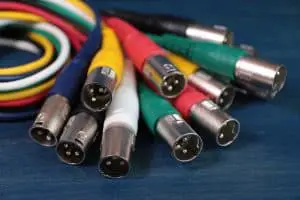
Types Of XLR Cables
Audio XLR Cables
XLR cables used for audio have a 3 pin orientation, are designed for low frequencies, are balanced, and are 75ohms low impedance high capacity cables. XLR cables are most frequently used with microphones, amplifiers, instruments, and speakers.
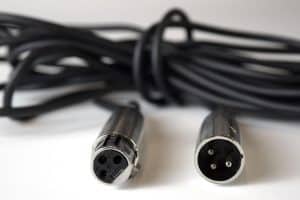
Lighting XLR Cables
We will briefly touch on XLR lighting cables to understand the differences between the two types of cables, so you don’t inadvertently purchase the wrong XLR cable when you are out shopping for one.
Lighting XLR cables are also called DMX cables. They are designed at 110ohms with a high impedance low capacity, and they have either a 3 pin or 5 pin orientation. These types of cables are used for high-end lighting and stage equipment.
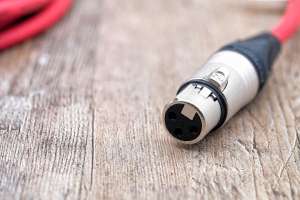
You should never use one type of cable and substitute it for the other because they are designed with different and specific impedance levels. XLR cables are the highest quality cable you can get for high-end audio and high-end lighting.
Watch ShowMeCables explain what audio and lighting XLR cables are.
Why Do You Use XLR Cables?
We use XLR cables because they are a high-end designed balanced cable compared to their counterparts that are designed to be unbalanced. They provide you with a better quality signal compared to other cables.
Balanced Cables
We will briefly discuss balanced and unbalanced cables; however, if you would like to know more, read this article here to go into a little more detail on balanced and unbalanced cables.
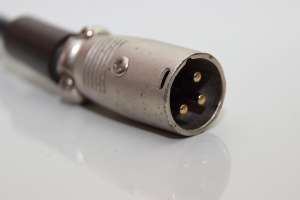
An XLR cable is a balanced cable, which means that it effectively cancels out any noise or interference when used. This is done by reversing the cable’s polarity when the signal runs from one end of the cable to the other.
Unbalanced Cables
Unbalanced cables are just the opposite of unbalanced cables; that is, they utilize only 2 wires. One wire carries the signal, and one wire is the ground.

There is no reversing of the signal polarity or copying of the signal done with balanced cables. These cables are also termed “hot cables” because they can produce a lot of noise or interference.
Watch Joe Gilder explain the differences between a balanced cable and an unbalanced cable.
What Are The Other Types Of Cables?
I am assuming you are using XLR for some audio applications, so we will quickly look at two other common types of audio cables you could use. Remember, XLR cables are designed with a specific purpose in mind, so you would use them appropriately in a given situation.
We will now look at a jack cable and a speakON cable for the intent of a few audio purposes. These cables may be better suited for your needs than an XLR cable depending on the situation you are in.
Jack Cables
Jack cables are unbalanced cables that usually come in a standard size of 1/4inch. You get models of a smaller jack cable (like headphone jack cables); however, usually for our audio purposes of a home studio, you will be using the 1/4 inch version.
These cables are also termed TS cables. These cables can introduce noise and interference when you use them and are usually only used for recording instruments such as guitar, bass, and keyboards.

Read my article here where I go over TS cables in more detail.
The important thing to note is that the longer a jack cable is, the more likely it is to be susceptible to noise and interference. The longest length you should be running a jack cable is no more than 10-20 feet.
After that, you will get noise, interference, and then the loss of audio signal, especially the high frequencies.
SpeakON Cables
SpeakON cables are designed specifically for speakers, as you might have guessed from the name. Specifically, they are used to plug into a power amplifier and then into either speakers or monitors. They can lock in place and are therefore preferred over jack cables.
Read my article here where I go into more depth about speakON cables.

They are preferred to jack cables because they are rated for at least 30 A RMS continuous current, unlike jack cables that have a much lower rating.
Watch Kennis Russel explain the differences between the different types of cables and connectors that you get.
Which Are Better? Jack Cable Or XLR Cables?
It all depends on your situation. However, if you are running cables that cover large distances, it would be advisable not to use an XLR cable, but to use a DI box that converts the unbalanced signal of a jack cable to a balanced one.
In most cases, if you are recording and using instruments, then a jack cable is fine. The noise and interference will be minimal, and you will be happy with the results of a jack cable. Just remember that the cable should not be more than 10-20 feet.
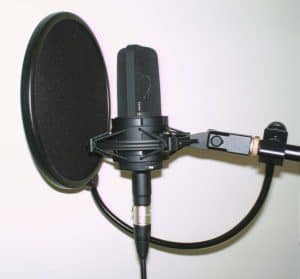
XLR cables are the high-end cables for audio because they have 3 wires. One wire is the ground wire, and the other two wires copy and reverse the signal’s polarity until the signal reaches the other end.
This, in turn, negates and cancels out all noise and interference. They are the “go-to” cable for professional situations. When possible, I would suggest always using an XLR cable.
The maximum length you can use an XLR cable without any noise or interference is a staggering 100 feet. Then theoretically, they say you can use them up to a staggering 1000 feet.
What Happens When Cables Get Too Long?
Depending on the cable, as we have now seen, if the cable is unbalanced in terms of a jack cable, you could get a large amount of noise and interference when trying to listen or record your audio. The noise and interference are directly proportional to the cables’ length as well (this means the longer the cable, the more noise and interference).

Another factor to consider is that the cables’ quality in terms of their design is different from each other. The materials used could be quite different from that of a jack cable to that of an XLR; hence the more susceptible they would be to damage.
What Is The Furthest You Can Run Cables?
We know now that a jack cable should run no longer than 10-20 feet. A speakON cable should run no longer than 50 feet at 1000 watts, and an XLR cable can run up to 100 feet and theoretically up to 1000 feet.
| Cable Type | Distance (feet) |
|---|---|
| Jack Cable | 10 to 20 |
| speakON Cable | 50 (at 1000 watts) |
| XLR Cable | 100 (up to 1000 possible) |
you can run various types of cables.
Conclusion
We conclude that XLR cable can run 100 feet without trouble, and theoretically to 1000 feet without being susceptible to noise or interference.
However, there are some things to consider when using an XLR cable. For example:
- What are you using the XLR cable for?
- Would other cables be better suited to your situation?
- Would other cables be cheaper than an XLR cable?
You can find out whether your XLR cables support phantom power here.
If you think your XLR cables have gone bad, you can find out here (and how to fix it).
